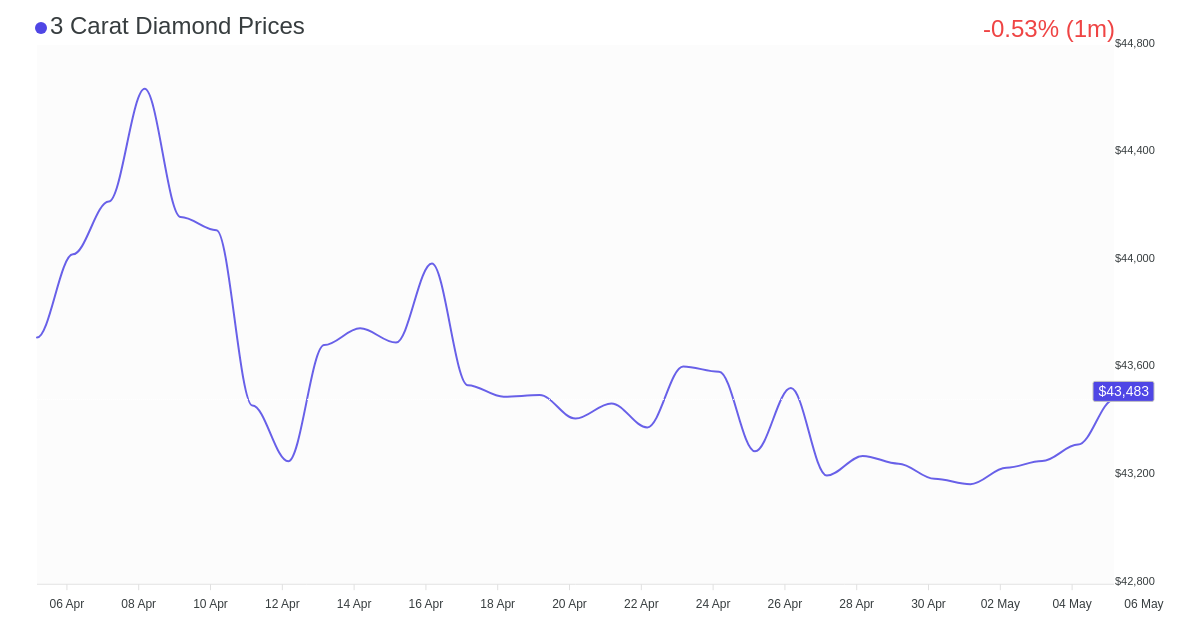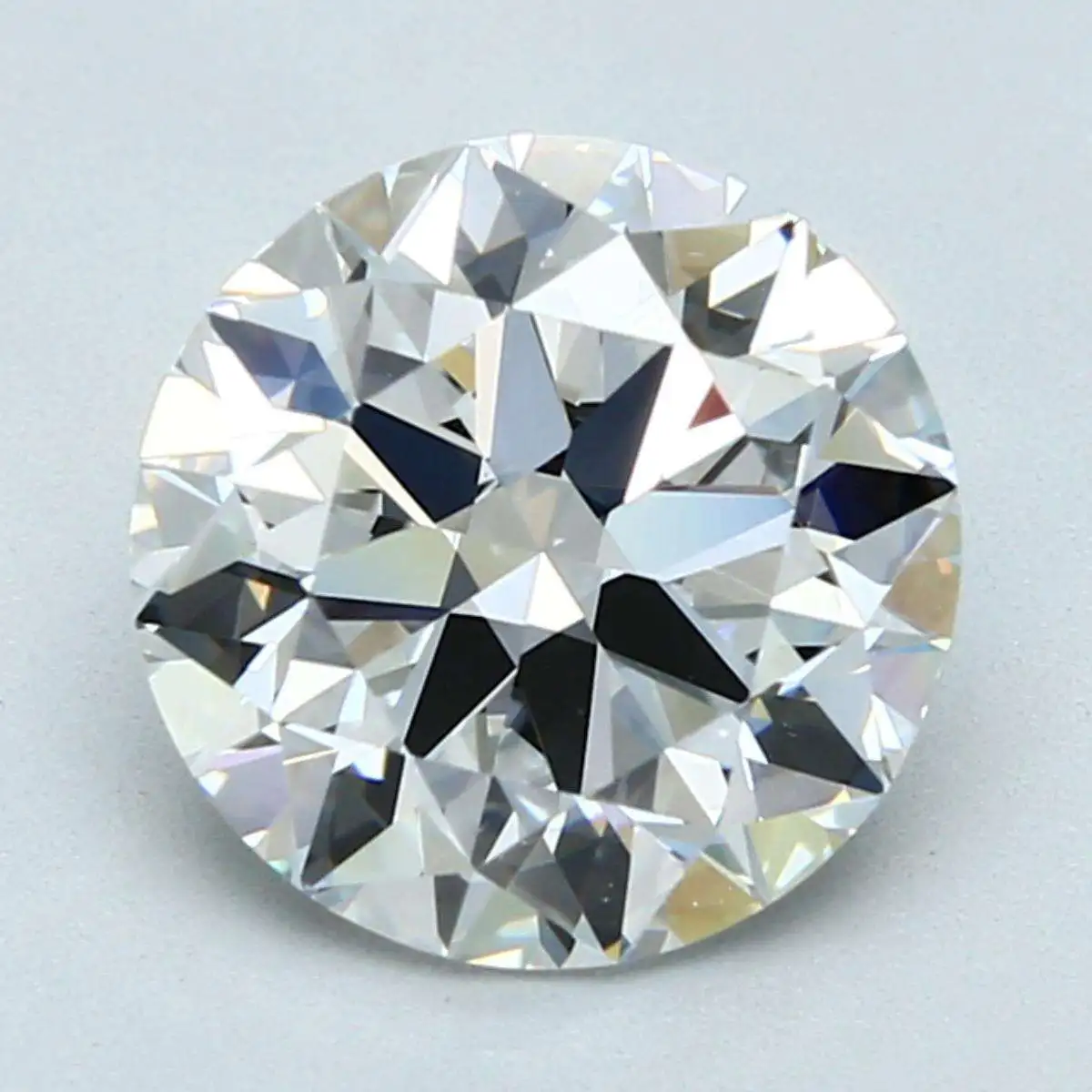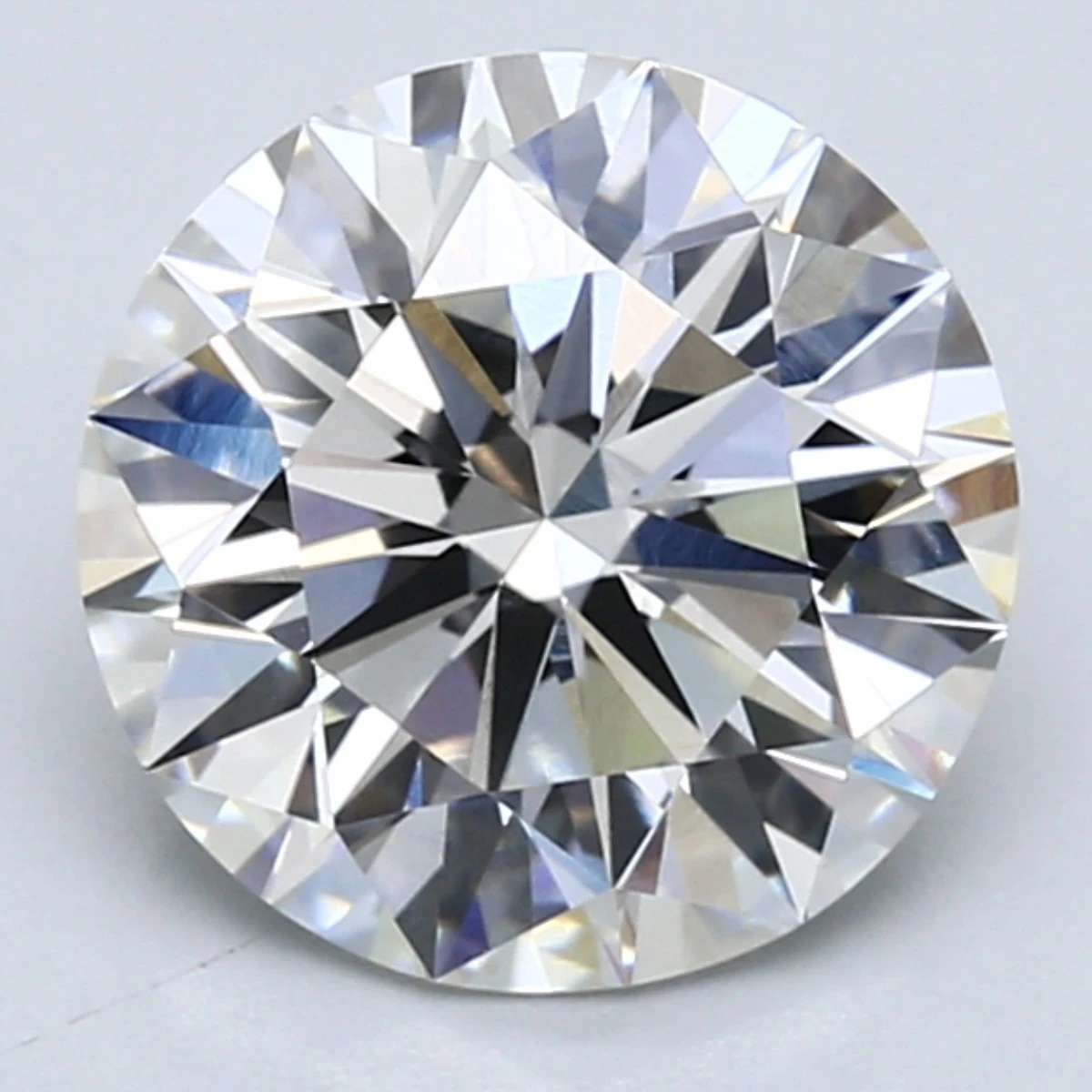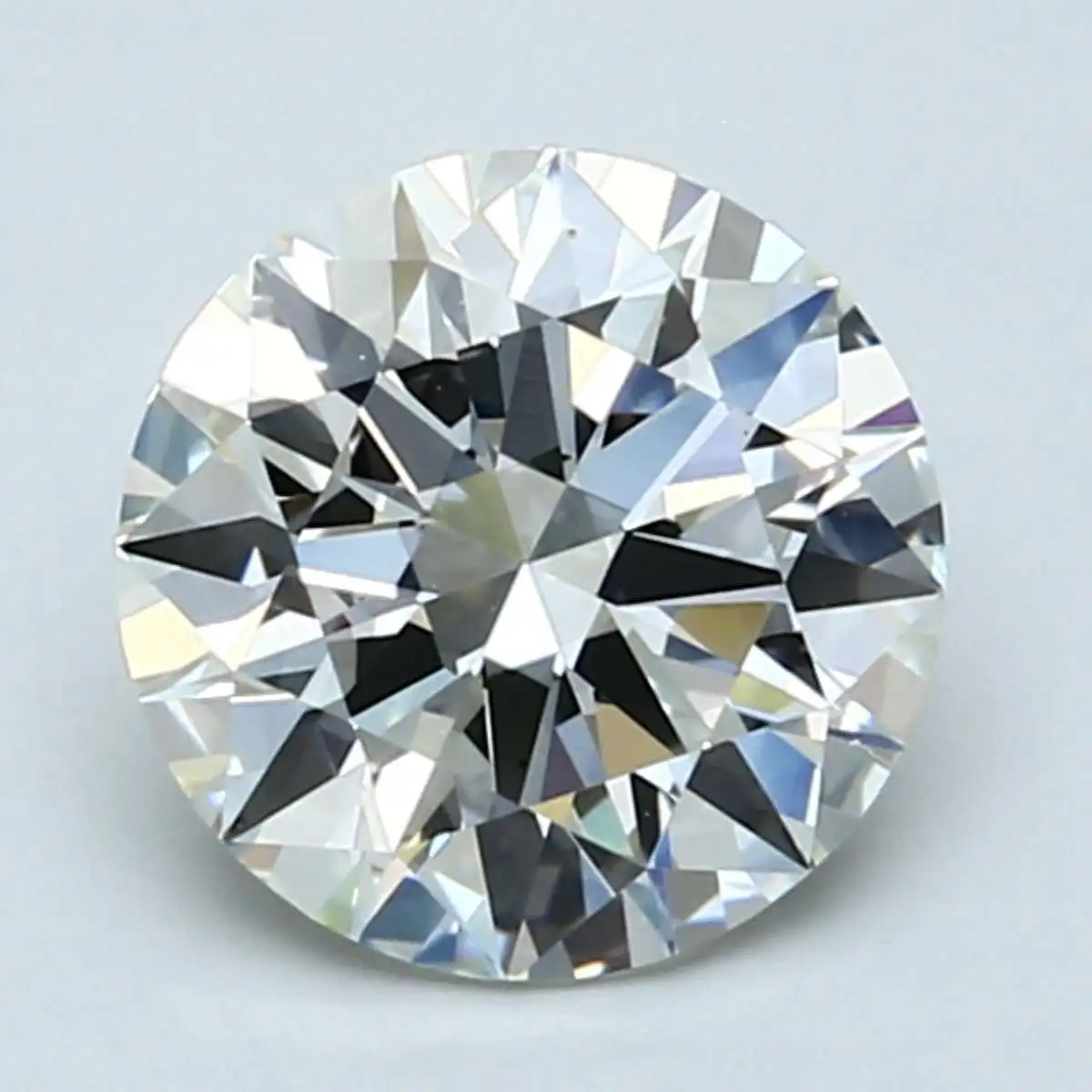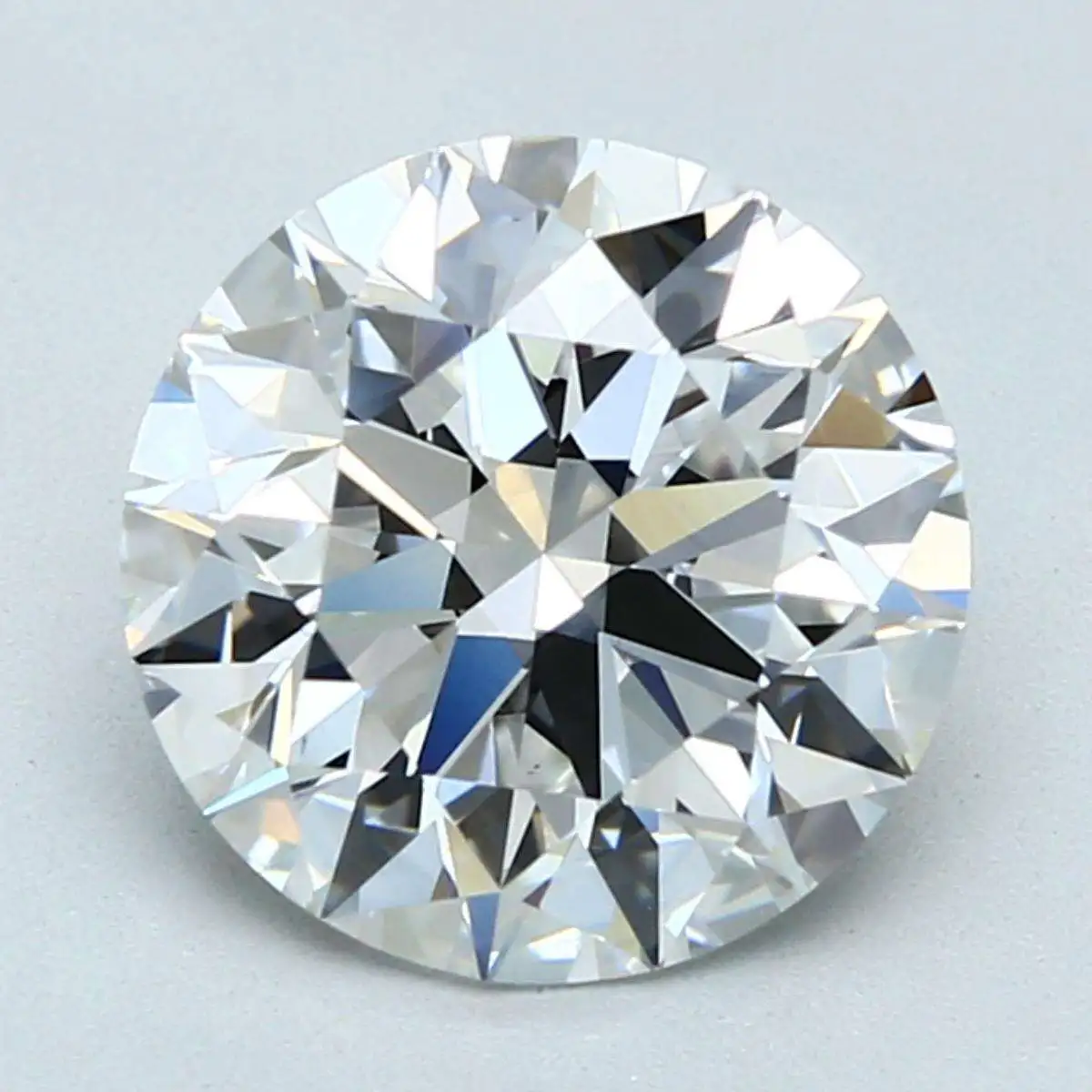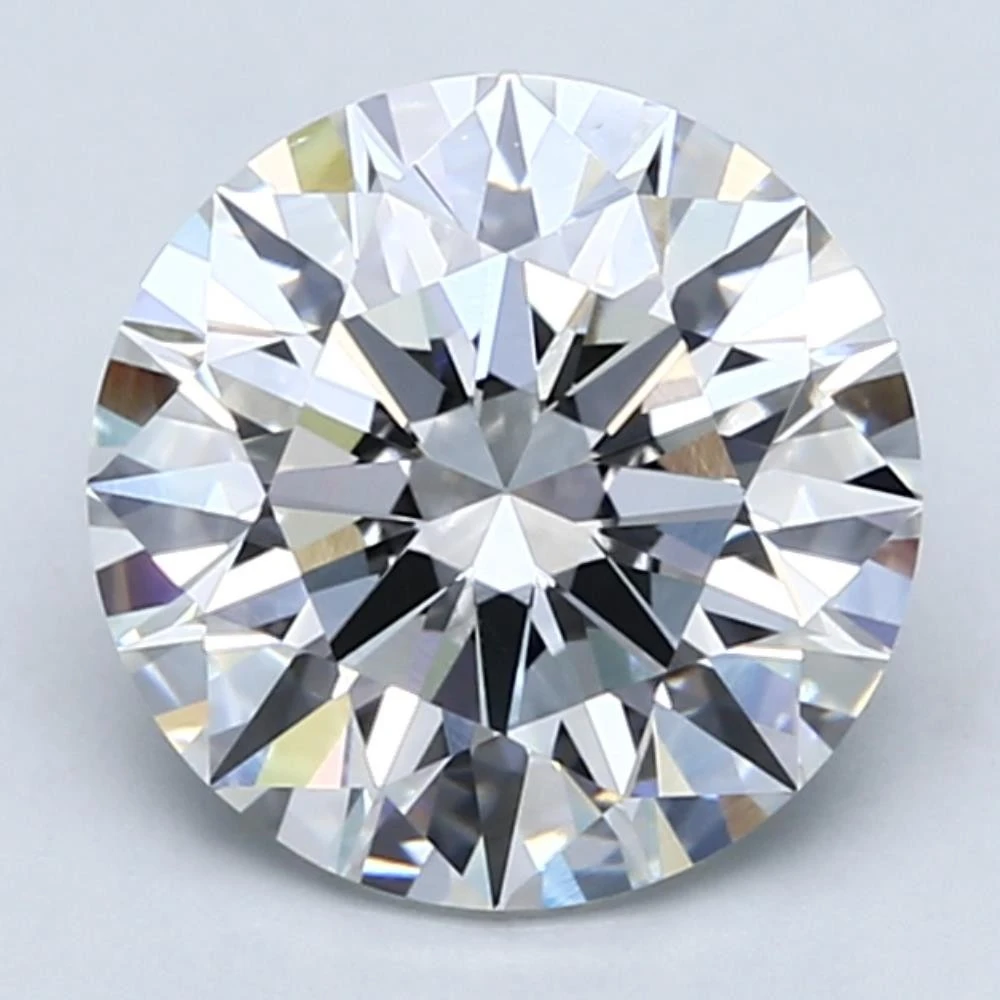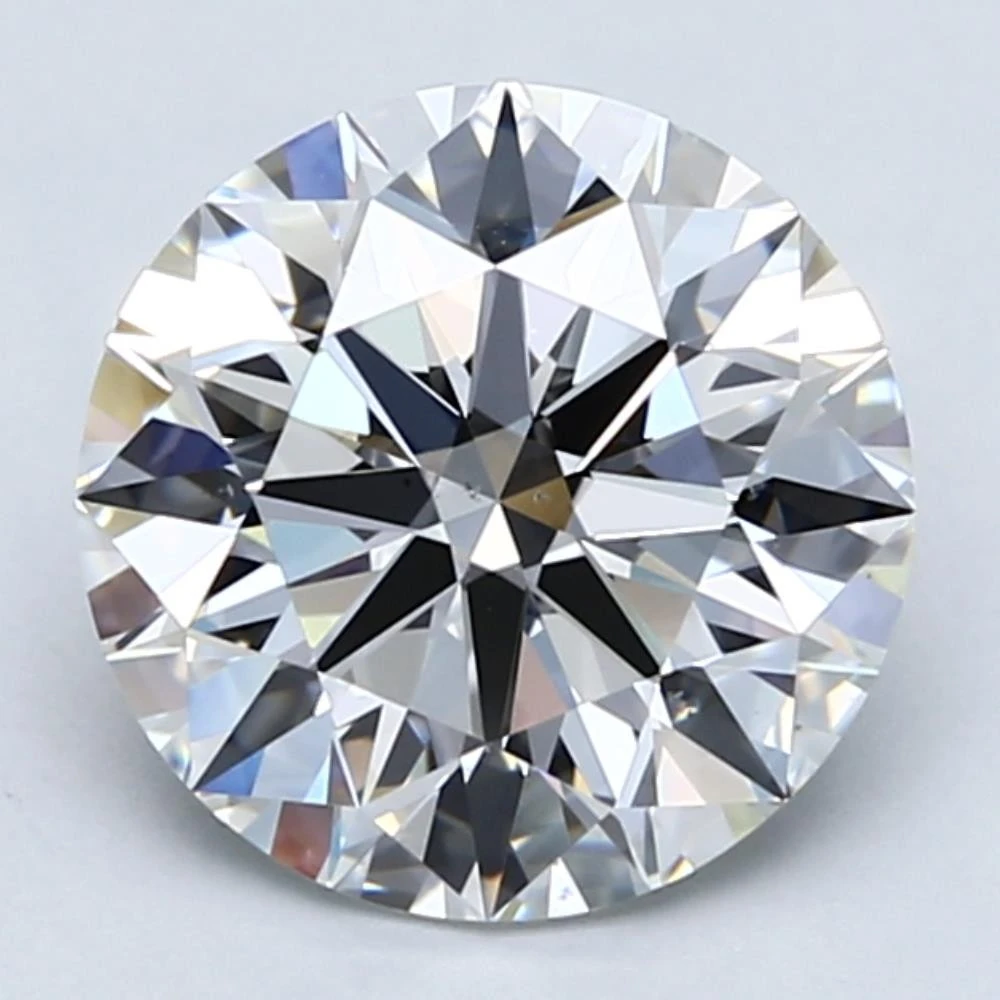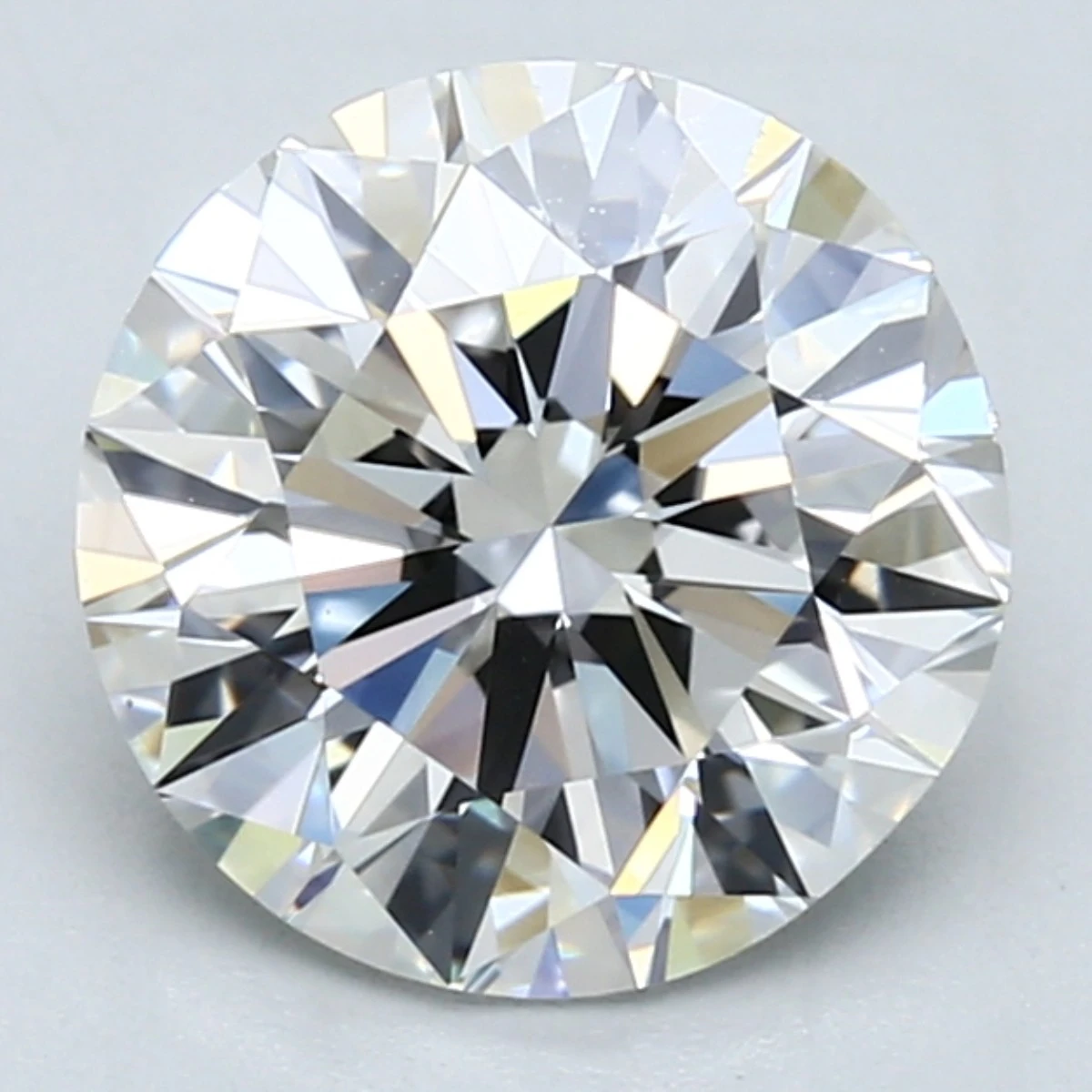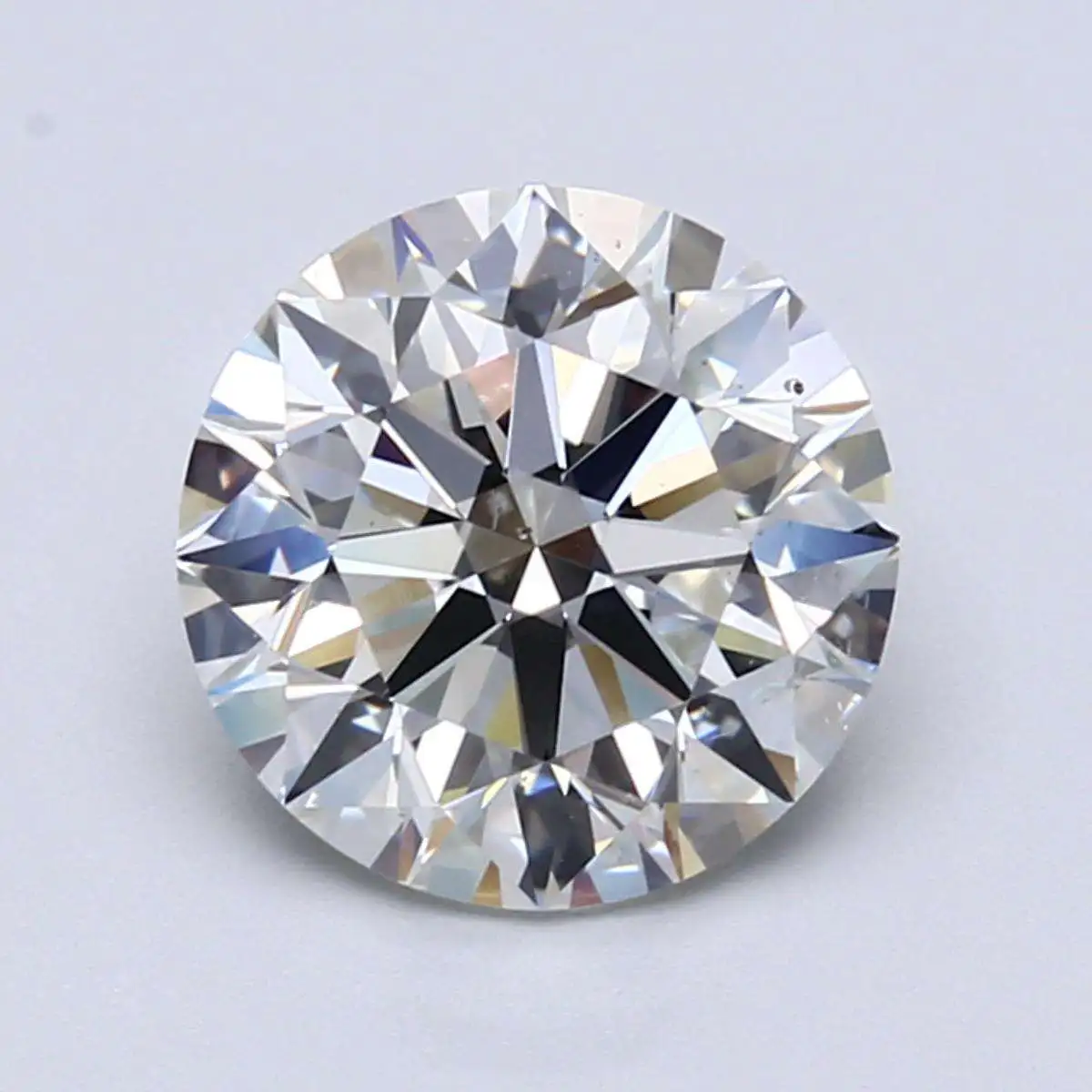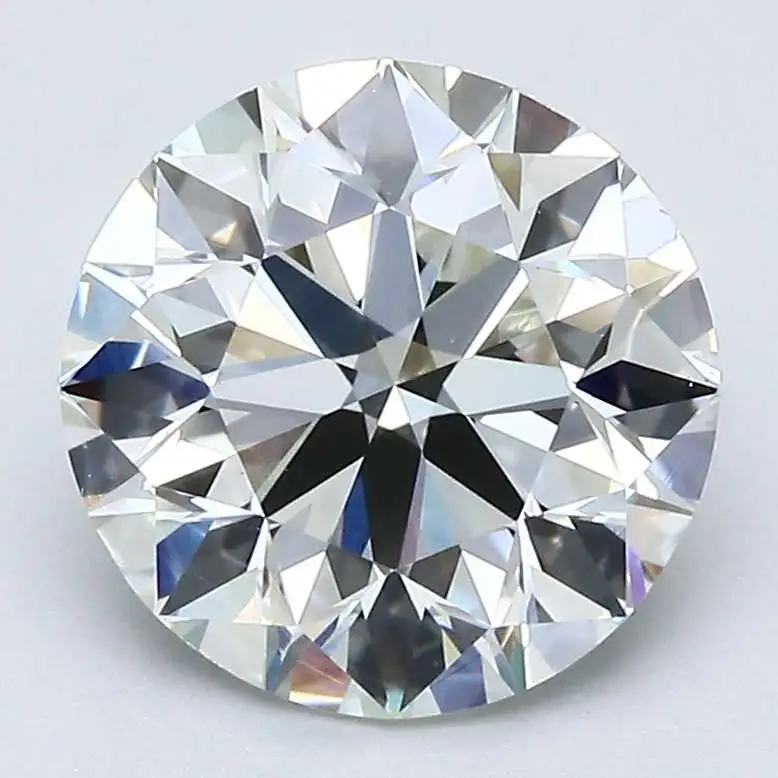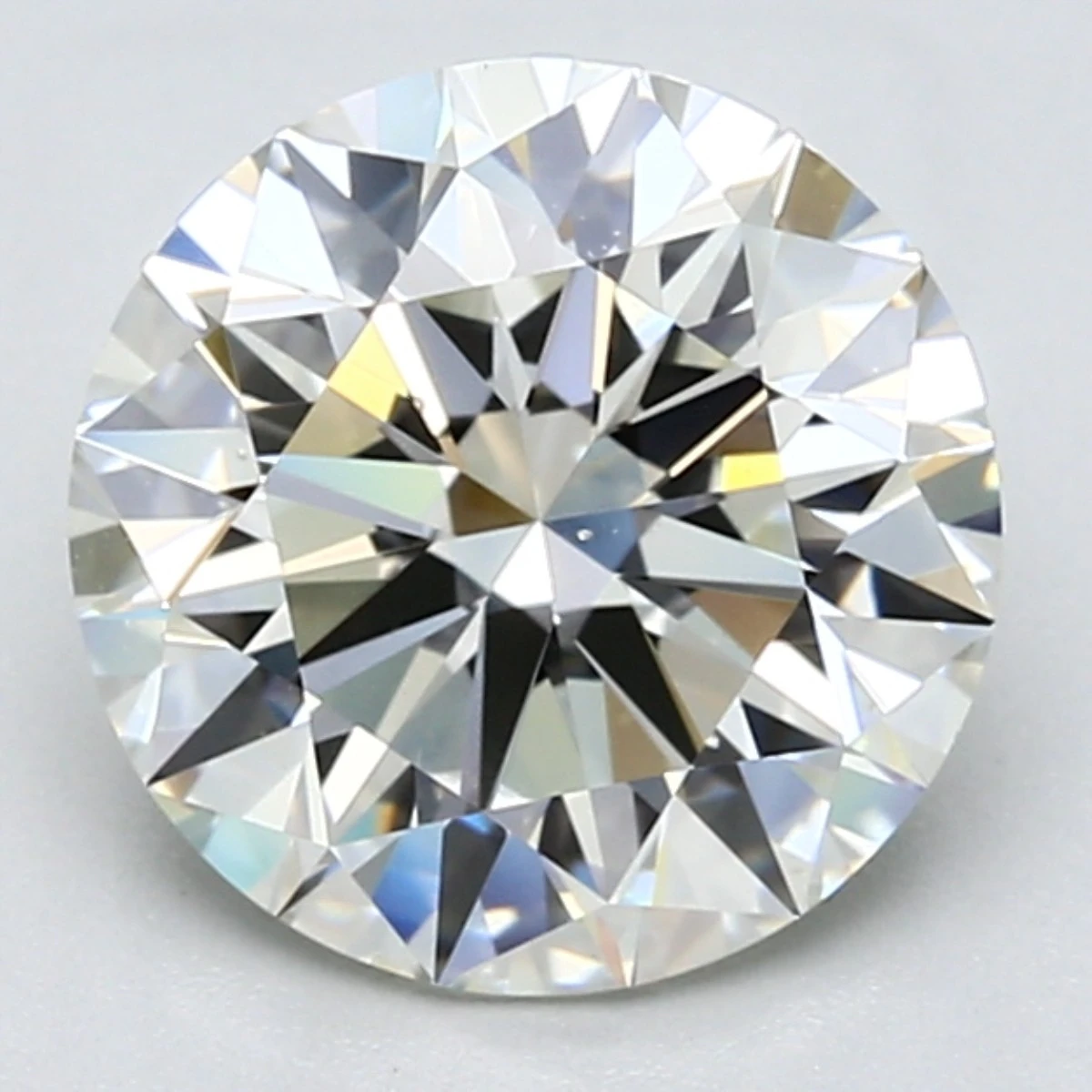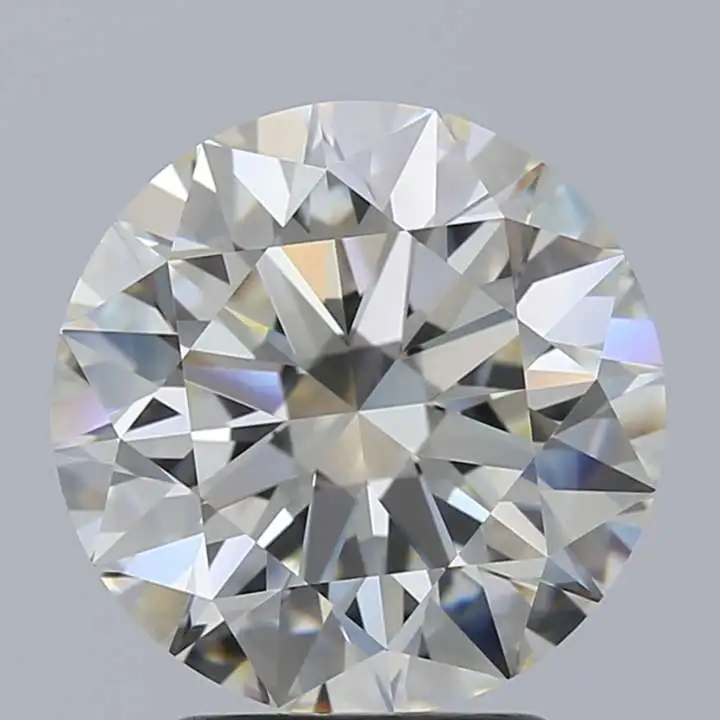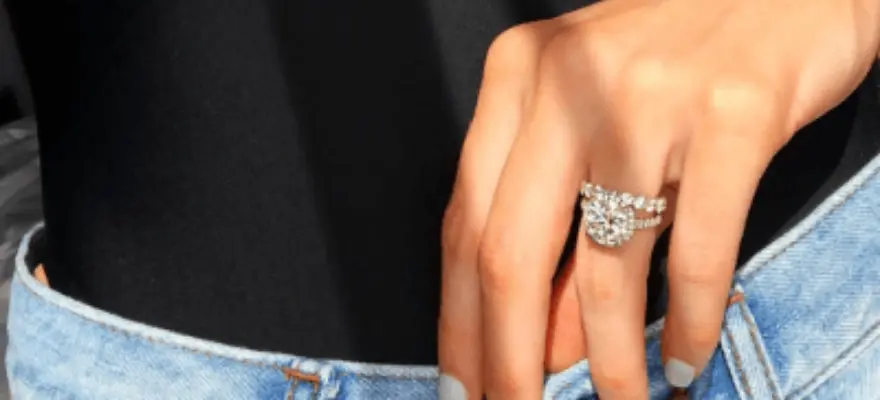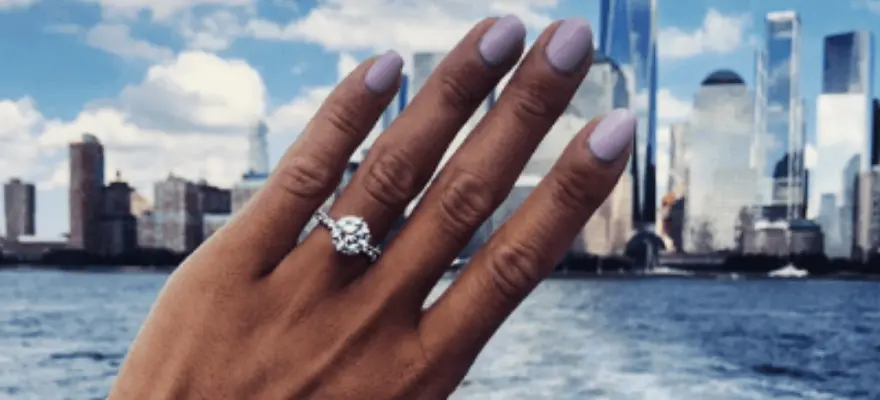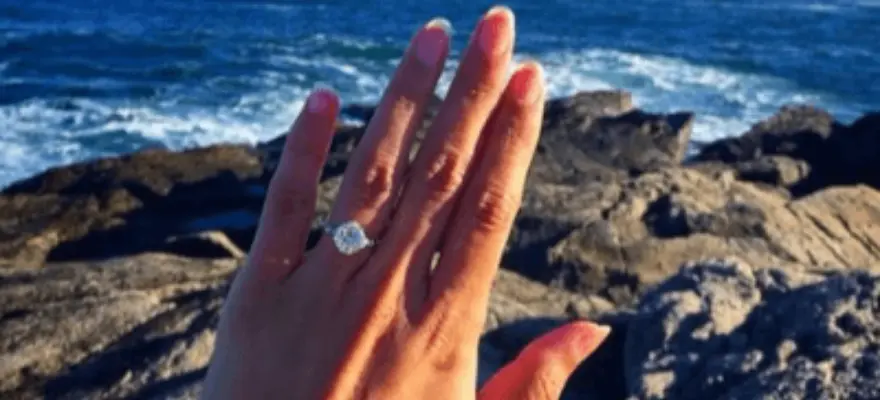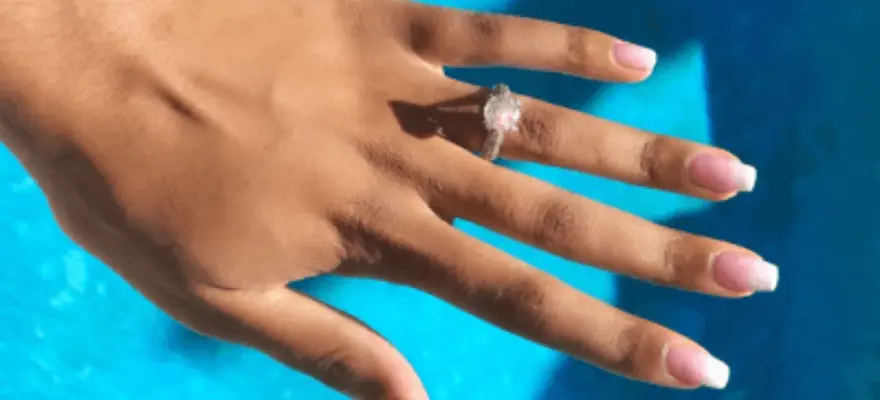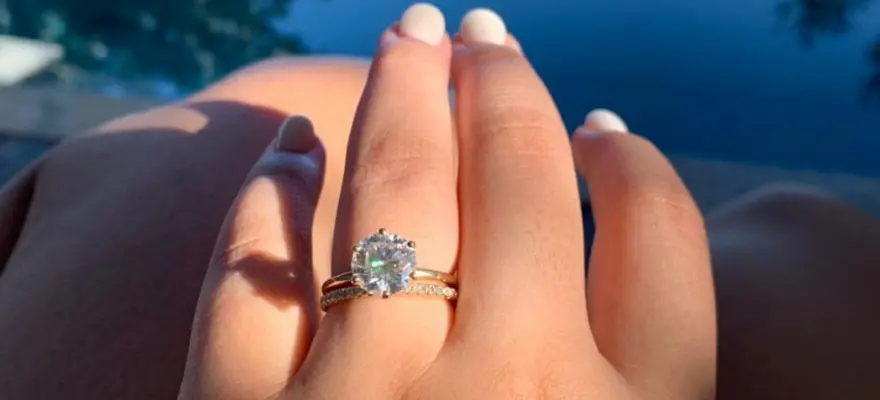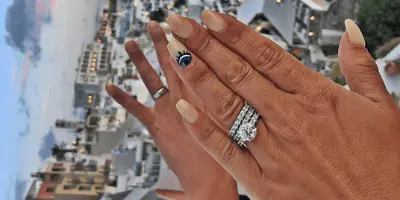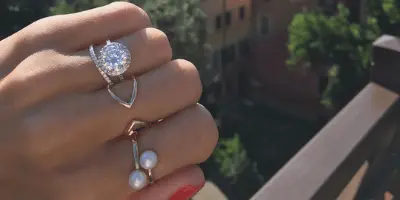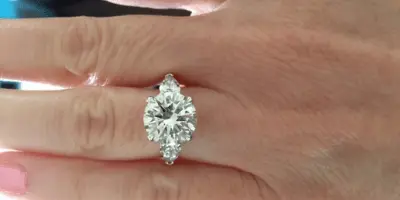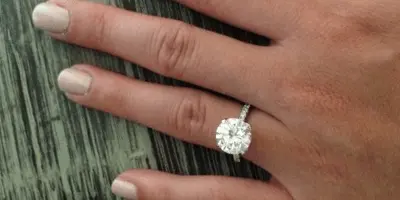March 8th 2022
3 Carat Diamond Rings: How Much & Where To Buy
By Devin Jones
So you’re considering a 3 carat diamond? Well, this is no average stone you’re looking for and we’re here to make sure you’re prepared to maximize every aspect of this purchase.
Did you know? According to most diamond experts interviewed in a study by Daily Mail, anything over 2 carats is considered a “big diamond”.
3 Carat Diamond Ring Prices
The average 3 carat diamond engagement ring currently costs about $46,750 USD. The majority of this price is due to the high price of 3 carat natural diamonds which currently average about $45,000 as of June 2023. The rest of the the price is due to the cost associated with the engagement ring setting itself. The price of the top engagement ring styles for 3 carat diamonds on Blue Nile ranges from $850 to $2,790, with the most popular setting costing $1,750.
If you're considering a 3 carat lab grown diamond, then the price is significantly lower. The average price of a 3 carat lab grown engagement ring is about $6,500 given the average price of 3 carat lab grown diamonds is currently about $5,000. Lab grown diamonds can cost as much as 90% less than natural diamonds which dramatically reduces the cost of the ring.
The price chart above shows the most up-to-date 3 carat prices for all natural diamonds. However, diamond prices can vary significantly based on the diamond’s shape, clarity, cut, fluorescence, and various other factors so it's important to know exactly what type of diamond you're looking for when you consider pricing. You can access the live version of our 3 carat diamond price chart to see updated data for any shape.
You can also use the below links to see 3 carat price charts of different color grades:
- 3 Carat D Color Price Chart
- 3 Carat E Color Price Chart
- 3 Carat F Color Price Chart
- 3 Carat G Color Price Chart
- 3 Carat H Color Price Chart
- 3 Carat I Color Price Chart
- 3 Carat J Color Price Chart
- 3 Carat K Color Price Chart
You can also see price charts for different diamond shapes:
- 3 Carat Round Cut Diamond Price Chart
- 3 Carat Cushion Cut Diamond Price Chart
- 3 Carat Emerald Cut Diamond Price Chart
- 3 Carat Oval Cut Diamond Price Chart
- 3 Carat Princess Cut Diamond Price Chart
The Best Color Grades For 3 Carat Diamond Rings
Our #1 tip when looking at a 3 carat diamond is: "pay extra special attention to which color grade you select". As diamond size increases, the natural color in the stone becomes more noticeable. At 3 carats the diamond’s natural color becomes more visible than it would be at, say, 1 carat.
"Pay extra special attention to which color grade you select with a 3 carat diamond"
3 carat diamonds tend to be quite expensive to begin with, so you want to ensure that you’re not overpaying for a $100,000 3 carat D color diamond when a $64,000 3 carat H color diamond will look identical to the naked eye…
Round brilliant diamonds tend to hide color better than most fancy shapes, but they are also the most expensive shape, so it’s a bit of a wash in terms of getting the best bling for your buck.
For 3 carat round diamonds we recommend choosing an H color diamond or better and for 3 carat fancy shapes we typically recommend a G color or better, to err on the side of safety. That said, you can get away with a color grade lower if you are comfortable doing so.
In fact, if you add in faint or medium fluorescence to your diamond specs it can actually help a lower color grade diamond like the below 3 carat J color diamond with medium fluorescence appear slightly whiter in UV lighting conditions. Fluorescence also tends to lead to a slightly lower price, though pricing depend on many factors.
You can read our Diamond Fluorescence Guide for more info.
This 3 Carat J VS1 diamond with medium fluorescence for $27,534 could pass for an I or H color (link).
That’s not to say you can’t purchase a lower color grade like J color and still have a beautifully white 3 carat diamond. A good way of offsetting the natural coloration in lower grade diamonds is by making sure you choose a yellow or rose setting; yellow gold and rose gold settings help hide some of the yellow color in a diamond because the human eye perceives color relative to its surroundings.
3 Carat Diamonds (By Color Grade)
To illustrate the difference between each color grade we’ve selected one 3 carat diamond in each color grade from D – K, keeping all the other metrics the same.
The below diamonds are all 3 carat Excellent/Ideal Cut VS1 diamonds and they are placed in descending order (from D color on the top left to K color on the bottom right).
Click on the images for more details
You can see how difficult it can be to tell the difference between different color grades. This phenomenon is not simply due to the images themselves, you would experience the same problems in evaluating these diamonds in real life. This demonstrates that color matters little above a certain threshold, in the 3ct range we would recommend staying at or above I color. This also means a big difference in price; the D Color is selling for $100,000 while the K color’s asking price is $39,000.
3 Carat Diamond Rings On Hand
People’s hand and finger sizes can vary quite a bit, so like most of our users you’re probably wondering what a 3 carat diamond will look on her hand. We have put together a few examples for you of 3 carat diamond rings on hands to see the difference in appearance.
Above: 3 carat diamond ring on size 3 finger
Above: 3 carat diamond ring on size 4 finger
Above: 3 carat diamond ring on size 5 finger
Above: 3 carat diamond ring on size 6 finger
Above: 3 carat diamond ring on size 7 finger
Above: 3 carat diamond ring on size 8 finger
3 Carat Diamonds In Different Setting Styles
It might be shocking, but ring design is actually the #1 factor in choosing a diamond engagement ring (not carat weight). A 3 carat diamond is hard to come by and you want to make sure that you use the setting that suits your loved one best. In this section we are going to go over a few of the most popular settings and show some on hand images. The most common settings are:
- The solitaire setting: in this setting the only diamond is the 3 carat center stone and hence the diamond is the sole focus of this setting
- The halo setting: large center stone surrounded by smaller stones, this creates the optical illusion that the main diamond is larger than it actually is
- The three stone setting: in this setting two smaller stones are placed on either side of the 3 carat center stone
Let’s go over a few examples of what each looks like and what it means for a 3 carat diamond
3 Carat Solitaire Setting (Also Known As A Prong Setting)
Probably the most classic and sought after setting, the solitaire puts all the emphasis in the center stone and there are no distractions! Having this in mind, you want to make sure you got an amazing, eye clean, and sparkly diamond.
You can expect to pay around $450 for an 18k yellow gold setting (like this one from Blue Nile).
3 Carat Halo Setting
Do you feel like 3 carat does not look quite big enough by itself? Then the halo setting is the setting is the setting for you. The diamonds around the center stone create a visual illusion that make it look proportionately larger. This is a tradeoff though because it does take focus away from the main diamond.
A halo engagement ring like the one above in 18k white gold starts at about $1,390.
When it comes to the clarity of the surrounding stones, it does not matter nearly as much as it does for your larger center stone (you can easily go with I1 clarity on these melee stones). You just want to make sure you get a similar color grade to the center stone (within 1 color grade, but since they’re so small the appearance of color will be less obvious for these smaller diamonds).
3 Carat Three Stone Setting (3 Stone Setting)
If you are torn between the solitaire and the halo settings, the three stone setting may be the way to go. It brings the best of both worlds. Choose small enough side stones and the center stone will look bigger than it is while not creating too much distraction. You can play around with the shapes of the side stones and often times it creates a unique and beautiful contrast.
A three stone engagement ring in 18k white gold starts at about $3,220.
3 Carat French Pave Engagement Rings
In addition to the setting you can also play around with the band styles. The most common by far is the pave band, which consists of small diamonds on part (or all) of the ring. In this example we are looking at a halo setting with a pave band.
A 1/4 carat total weight pave engagement ring in 18k white gold starts at about $1,450 (like these from Blue Nile).
3 Carat Round Diamond Size Chart
Below is our 3 carat diamond size chart. One common misconception regarding diamond sizes and carat weights is that double the carat means double the size (in diameter or surface area). But, as you can see below, a 3 carat round diamond doesn't have anywhere near double the surface area of a 1.5 carat diamond. In fact while the carat weight doubles, the surface area only increases by 58%.
| Carat | Diameter (mm) | Surface Area (sq. mm) |
|---|---|---|
|
0.5 ct. |
5.10 |
20.41 |
|
1 ct. |
6.42 |
32.37 |
|
1.5 ct. |
7.35 |
42.39 |
|
2 ct. |
8.08 |
51.34 |
|
2.5 ct. |
8.71 |
59.55 |
|
3 ct. |
9.25 |
67.24 |
|
3.5 ct. |
9.74 |
74.50 |
|
4 ct. |
10.18 |
81.43 |
|
4.5 ct. |
10.59 |
88.06 |
|
5 ct. |
10.97 |
94.46 |
© 2024 StoneAlgo, Inc. All rights reserved.

